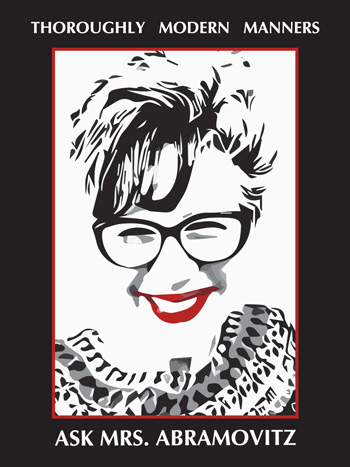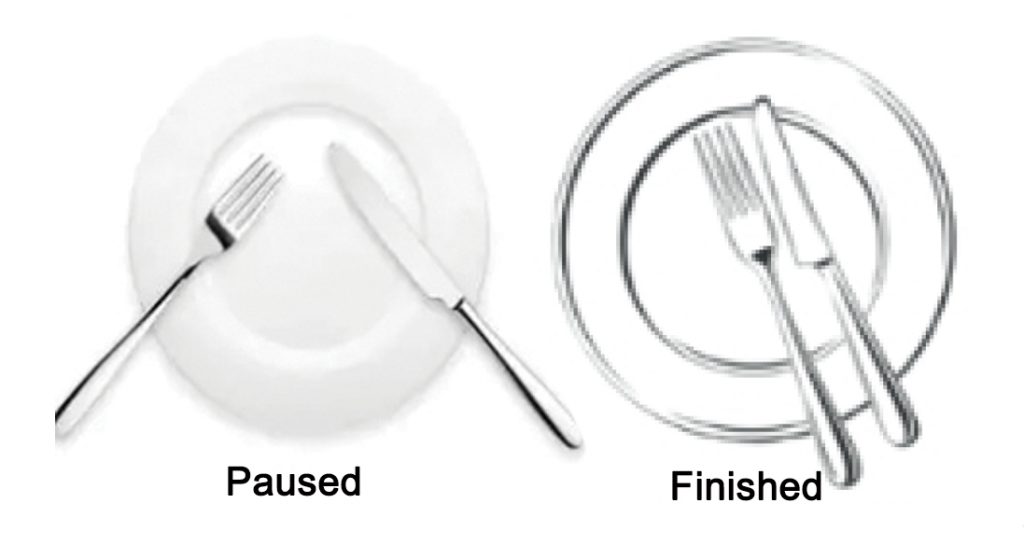Dining etiquette

Dear Reader,
Let’s pretend we’re at our favorite restaurant and we get carried away in conversation, but we’re not ready for our plate to be taken away. What are the nonverbal clues, the sign language, the secret codes spelled out through silverware? In other words, how do you get your server’s attention while staying engaged in the conversation?
Folks, I googled just this and there were 1,340,000 results. Do not fret, however, as I have distilled it here for all of you.
Dining etiquette involves not only proper use of your utensils while eating, but using them to signal information that makes dining pleasant for everyone. Servers appreciate knowing what you need from them and nonverbal signals are a small but significant part of civilized dining.
A well-trained server can understand when you are still working on your food or want you want your plate removed.

“There are two and only two signals to be sent and received through utensil placement. One is when you are pausing and the second is when you are finished. There is no tradition anywhere that requires other signals. Attempting to do so only causes confusion,” according to etiquette enthusiast, Maura J Graber, site editor for Etiquipedia© Etiquette Encyclopedia.
When taking a break, place your fork and knife in the center of the plate with the tips facing each other forming an inverted (V). And when you are finished, the knife and fork go either straight up and down on the center of the plate with the handles resting on the rim, or pointing between 10 and 4 o’clock (see images below). In each case the tines of the fork should be facing up and the knife edge pointing in.
And that’s it!
Big Love,
Mrs. Abramovitz